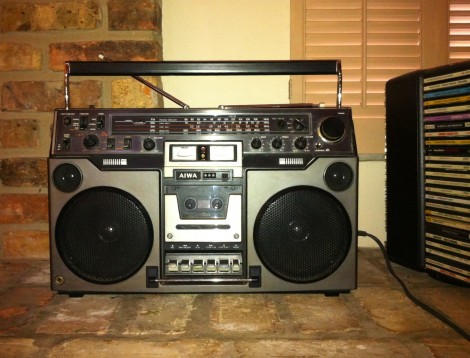The World Health Organization has identified exposure to recreational noise as the greatest threat to the hearing health of teens and young adults . Some 1.1 billion people are at risk of hearing loss due to the unsafe use of personal audio devices (smartphones too) and noisy venues such as sporting events and nightclubs.
Worldwide 360 million people currently experience moderate to profound hearing loss – half could have been prevented.
According to data from studies completed in mid to high income countries, The World Health Organization concludes that among teenagers and young adults aged 12-35 years, nearly 50% are exposed to unsafe levels of sound from the use of personal audio devices and 40% are exposed to potentially damaging levels of sound at entertainment venues. These numbers seem in pace with the trend noted in a 2010 study published in the Journal of the American Medical Association that found hearing loss in U.S. adolescents increased by about 30 per cent between 1998 and 2006.
Hearing loss has potentially devastating consequences for physical and mental health, education and employment.
Considering the fact that hearing plays an essential role in communication, speech and language development, even a small amount of hearing loss can have significant negative effects on language comprehension, learning in schools, and social development. Without intervention children with hearing loss will not perform as well academically as children without hearing loss. As children with hearing loss progress thought school the gap in academic achievement will widen.
How Loud is Too Loud?
To listen to your iPod continuously day in and day out the recommendation is to not exceed 80 dB. A real-world example of 80 dB Would be your bedside alarm clock while roadside sound levels during heavy traffic is often cited to be approximately 85 dB.
For more accurate answer, a 2011 study published in the Journal of American Academy of Audiology tested audio devices and determined that using the white ear buds packaged with Apple products at the time such as the iPod could hit a maximum sound level over 100 decibels.
Is There a Safe Volume?
Several studies have indicated the average volume people use when listening to a personal audio device such as the iPod, is actually an average of 94 dB. To put that in perspective, most countries and monitoring organizations will suggest a safe sound level on a regular workday to be 80 dB for an eight-hour shift. The common work-related limit where hearing protection is a requirement in order to avoid hearing loss is generally set to about 85 dB for a period of eight hours. That said, because the decimal system is not linear scale, a 3 dB increase in sound level is actually a doubling of the noise level experienced.
Because we measure exposure to sound levels in decibel per hour, when you crank the volume past the warnings all the way up to 100 dB+, you have just 15 short minutes of listening pleasure to match the total exposure of eight hours at 85 dB which is the threshold for mandatory hearing protection.
How Do You Prevent Hearing Loss?
Comes to hearing loss due to excessive noise levels, education is the first step. The next step is regulation of the maximum sound levels an electronic device can generate Which is what the European union has done years ago. The problem there is that people often find ways around those limitations.

What Headphones/Ear Buds Are Safe?
The company that created the resurgence of the personal audio device – Apple, is a bit vague in their suggestion: “The actual sound pressure level that you experience depends on several factors: the music you’re listening to, how it was recorded and encoded, the type of ear buds or headphones you use, and their placement in your ears.”
Custom moulded earplugs provide high levels of hearing protection and all day comfort plus make a waterproof seal.
Common sense dictates that closed earbuds and sealed over the ear headphones meant for isolating your hearing environment are the greatest potential threat in terms of their ability to deliver the maximum audio levels a device can reach. That said, the open style earbuds and headphones are not sufficiently quieter to matter much once the volume is pinned to the highest level possible.
Please remember that noise induced hearing loss is a one-way street. Your hearing does not repair itself and any amount of hearing loss is permanent.
May is Speech & Hearing Awareness Month
If you know someone that has been putting off a hearing test, perhaps May is the month to encourage them to book an appointment for a hearing test & evaluation.
Let us know what you think – leave a comment!
To hear what you’ve been missing, call the Polo Park Hearing Centre Monday to Friday between 9 a.m. and 5:30 p.m. and Saturday between 10 a.m. and 2 p.m. (204) 788-1083


